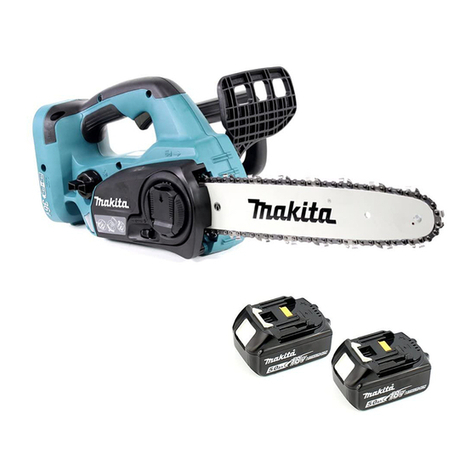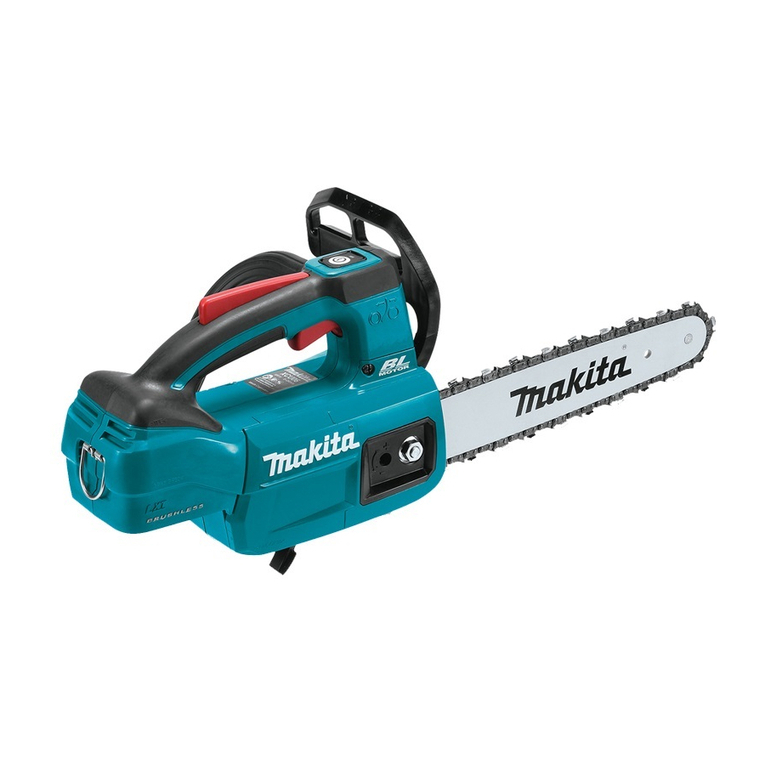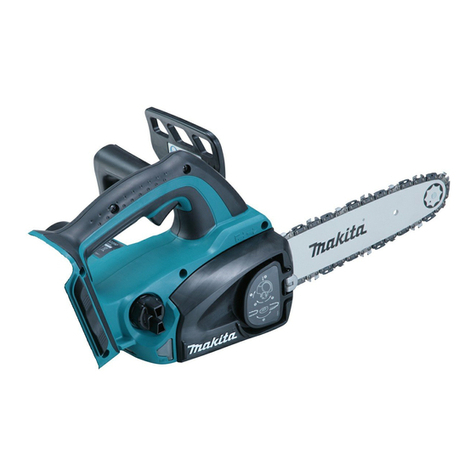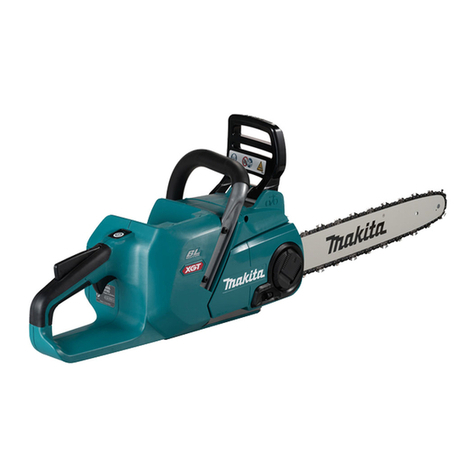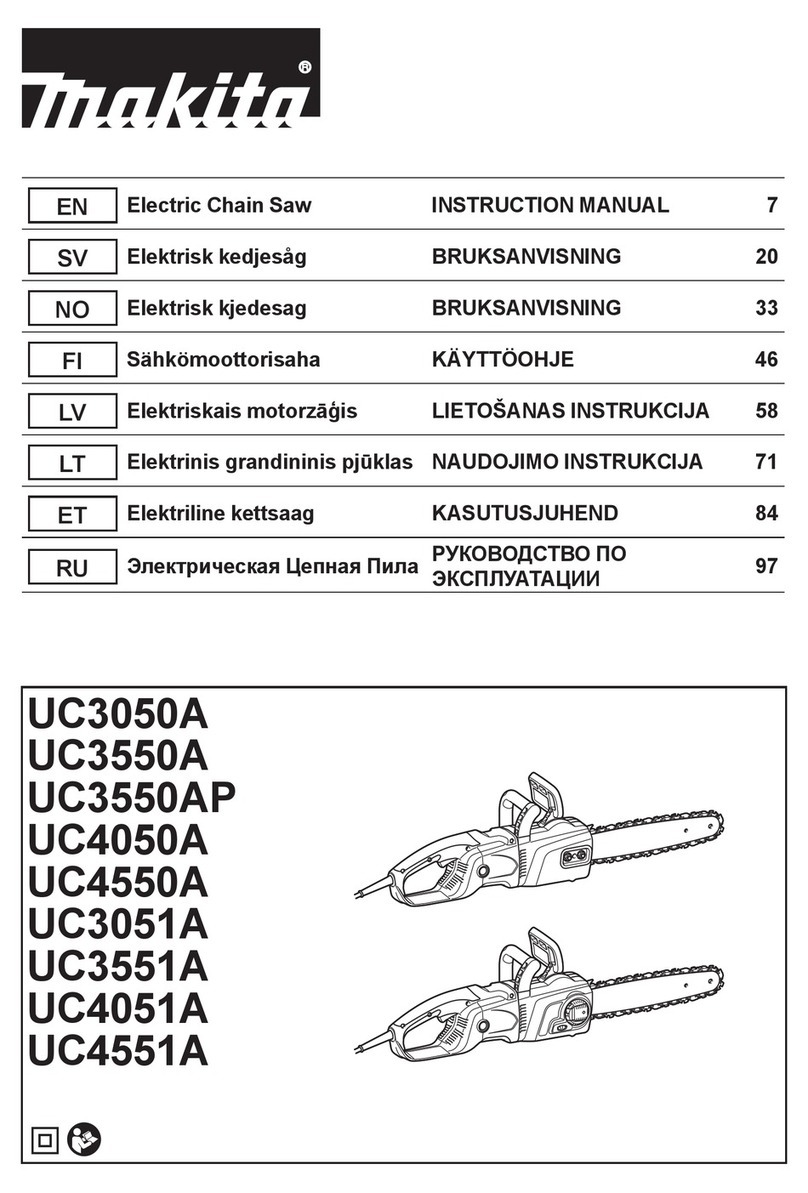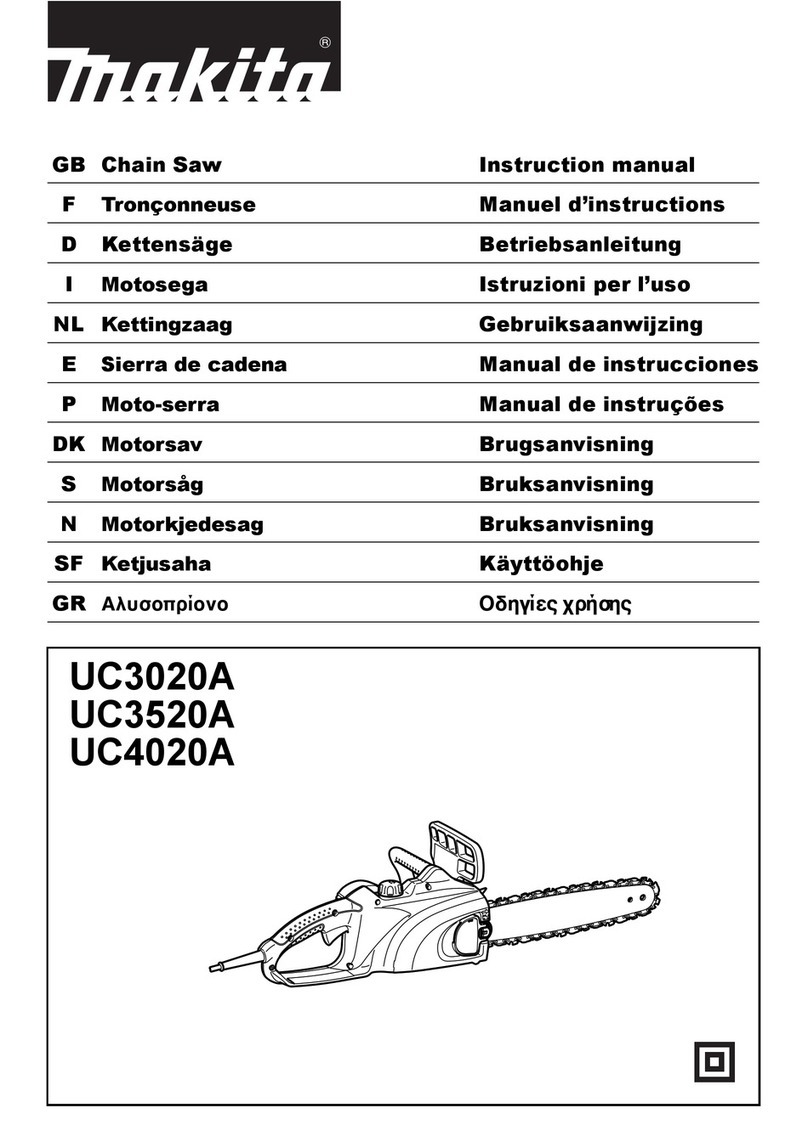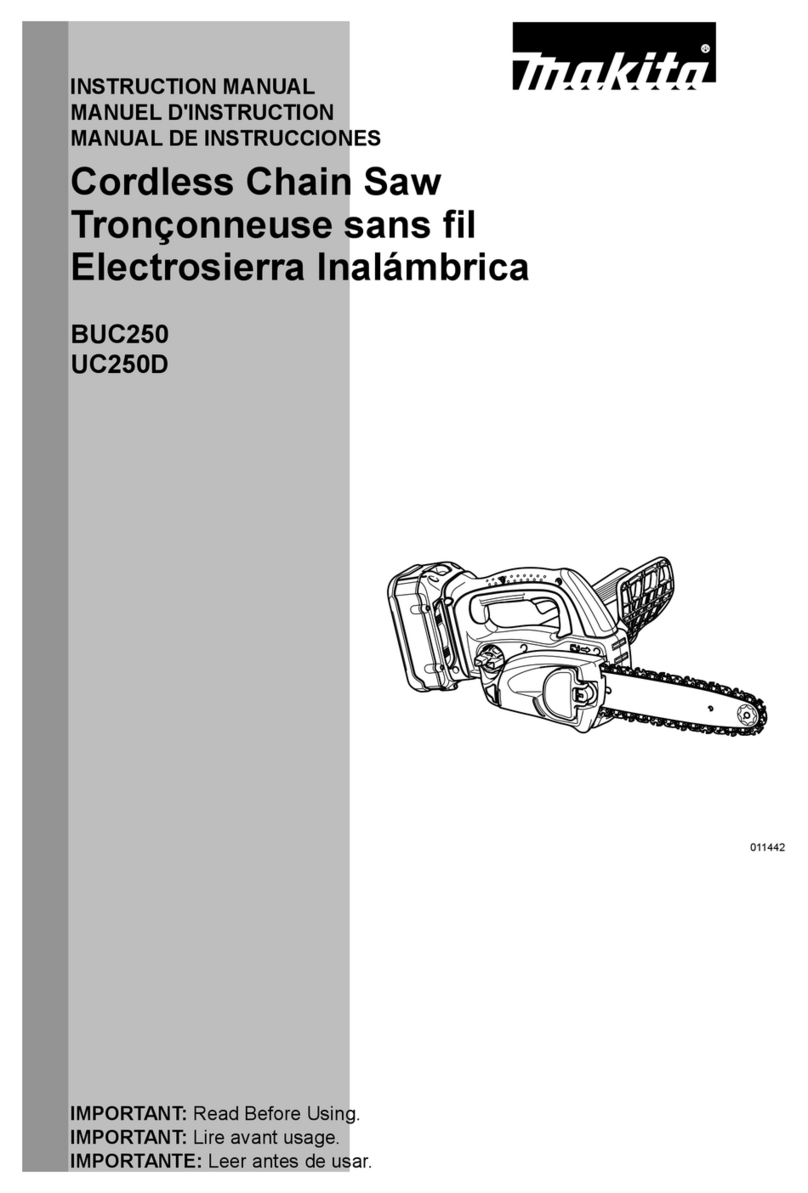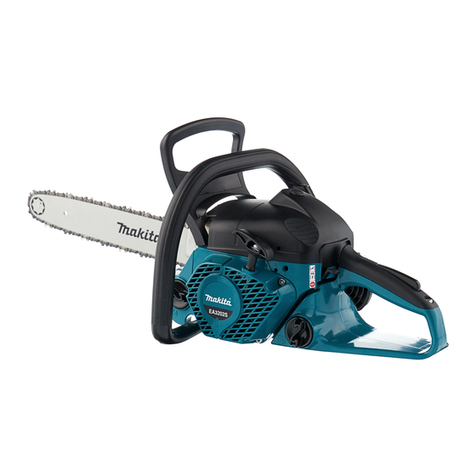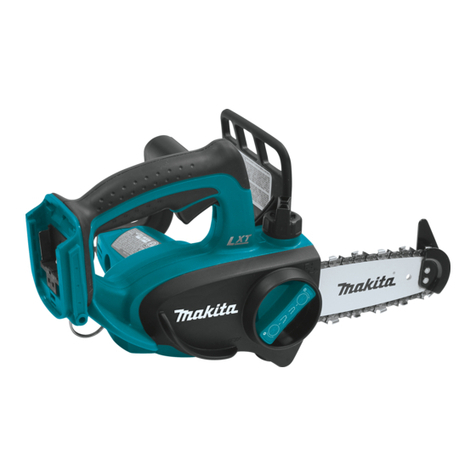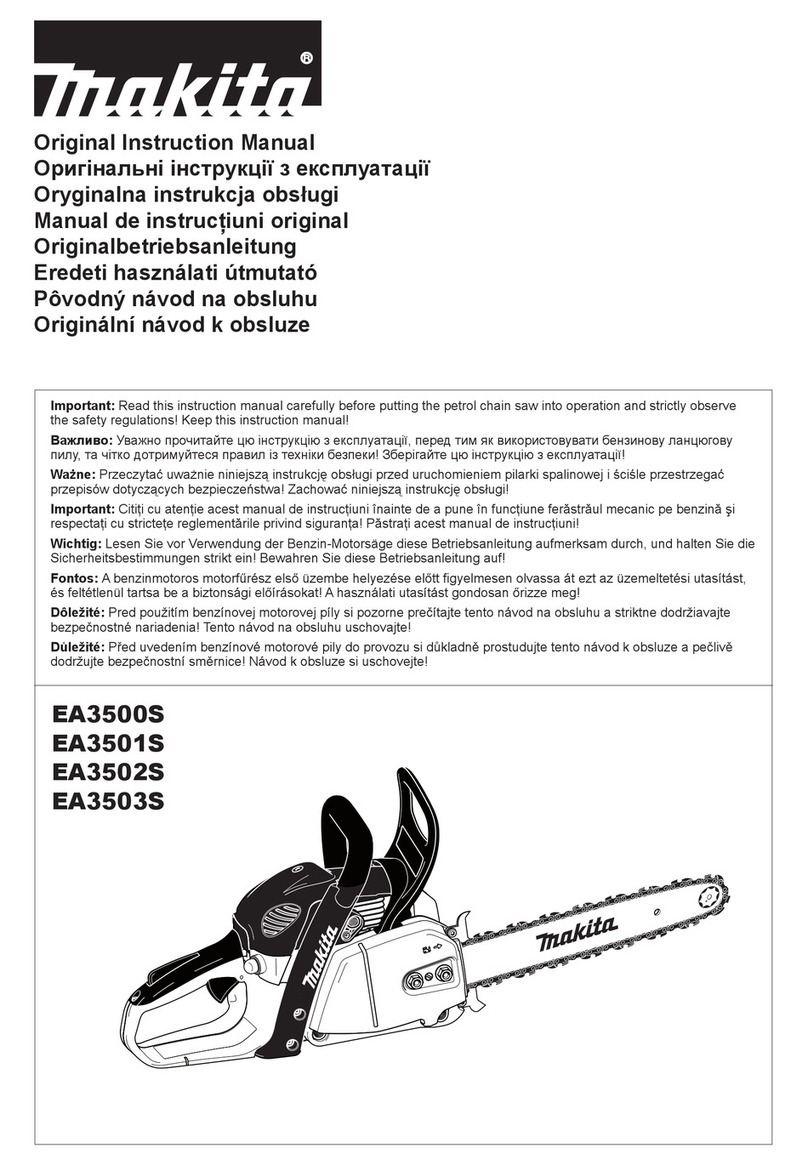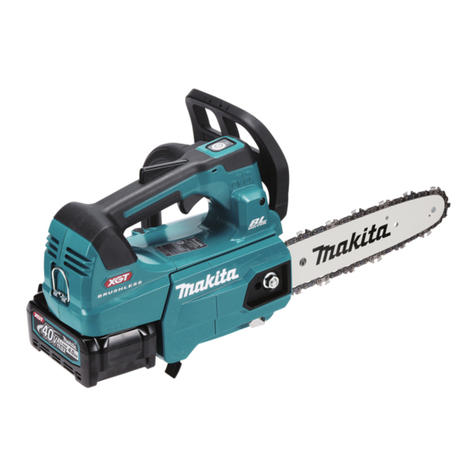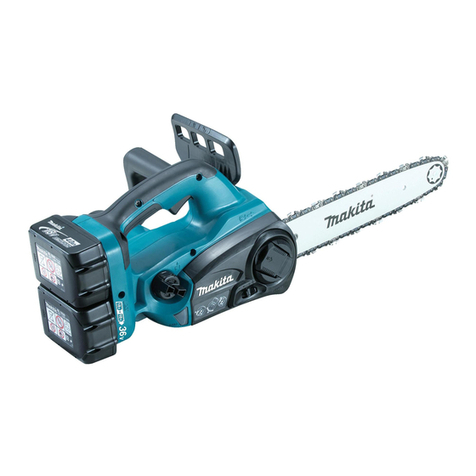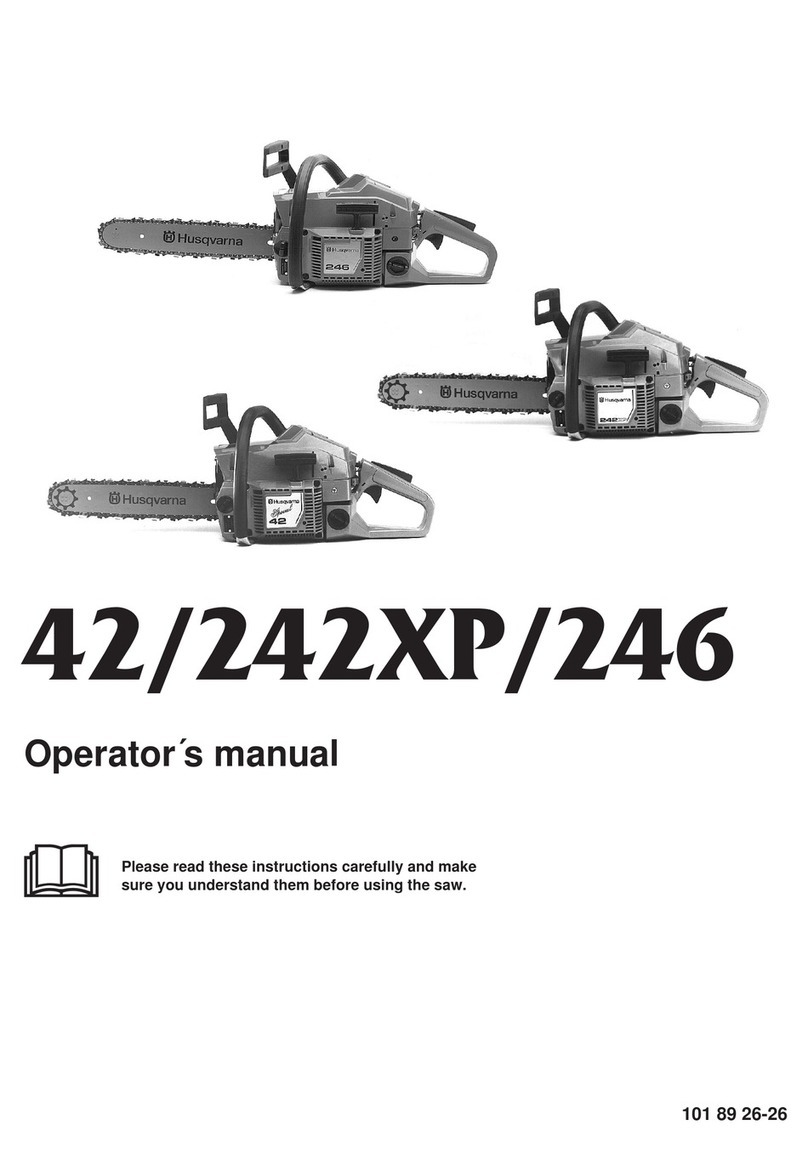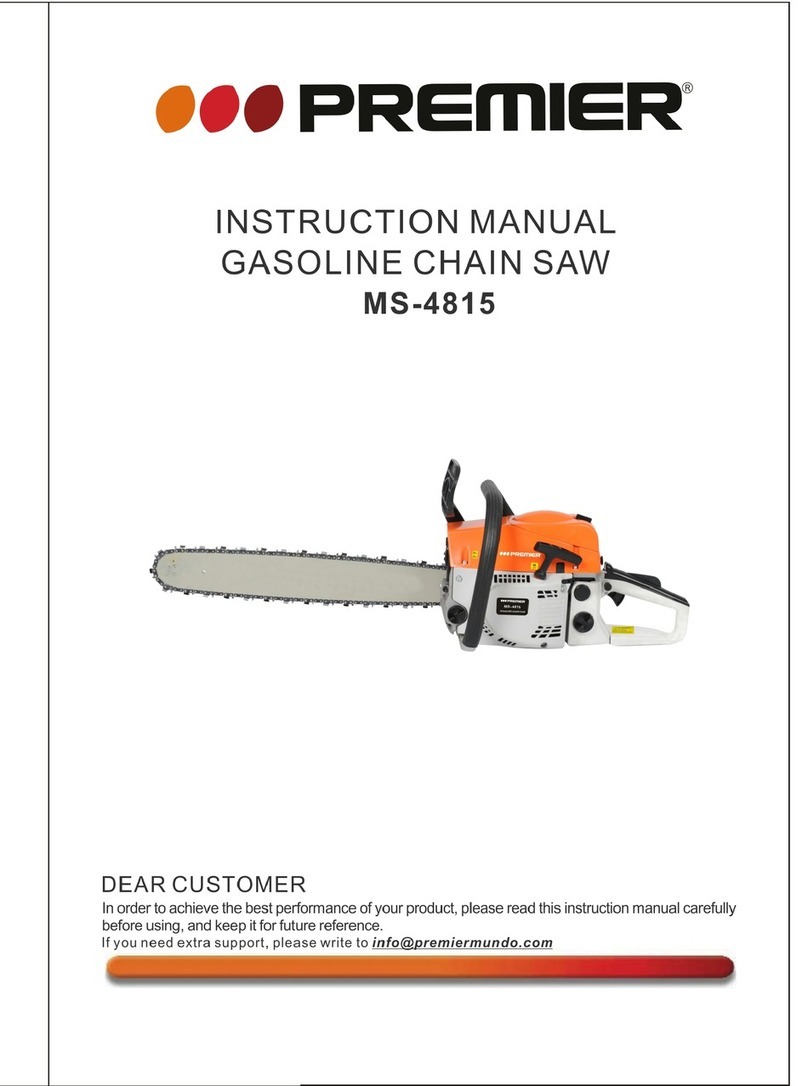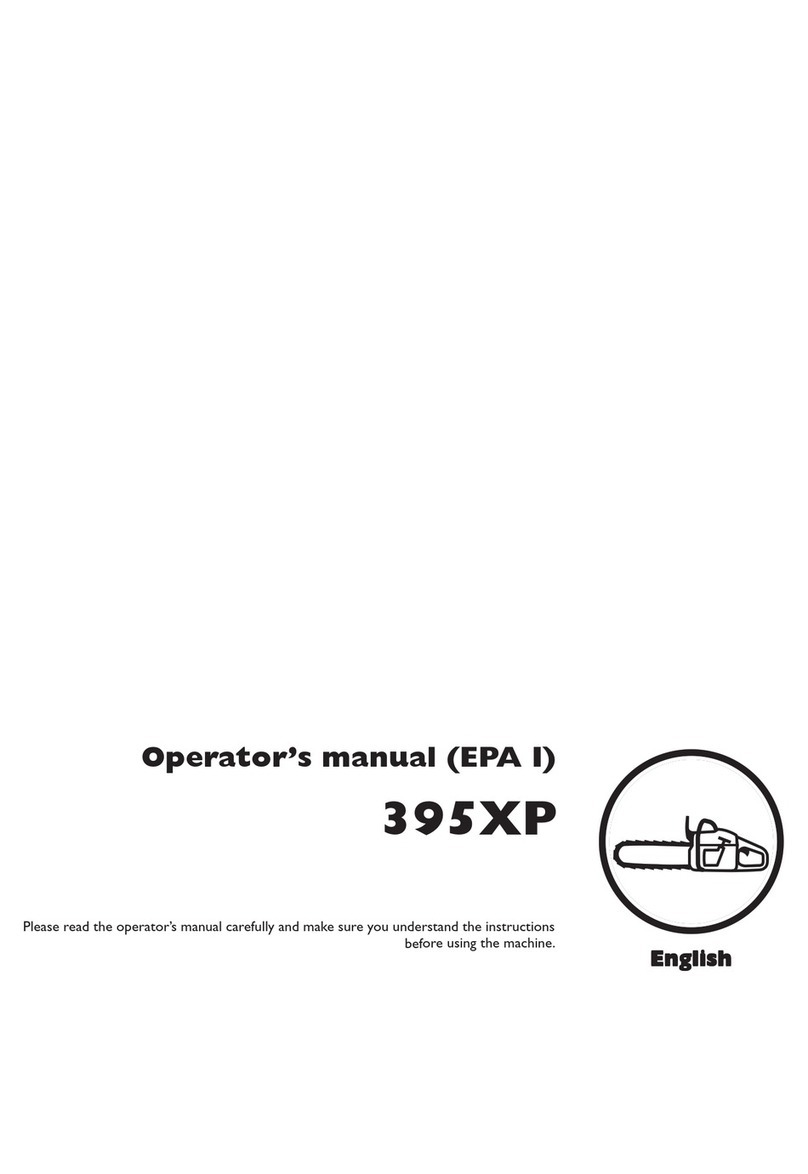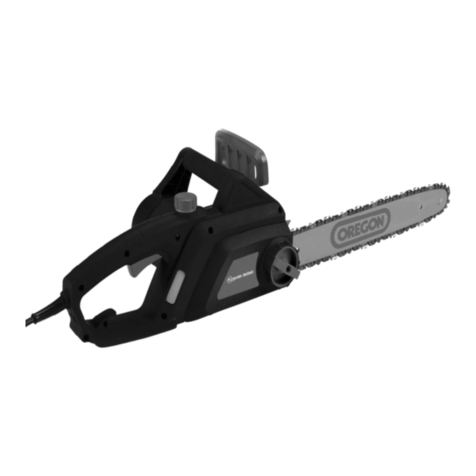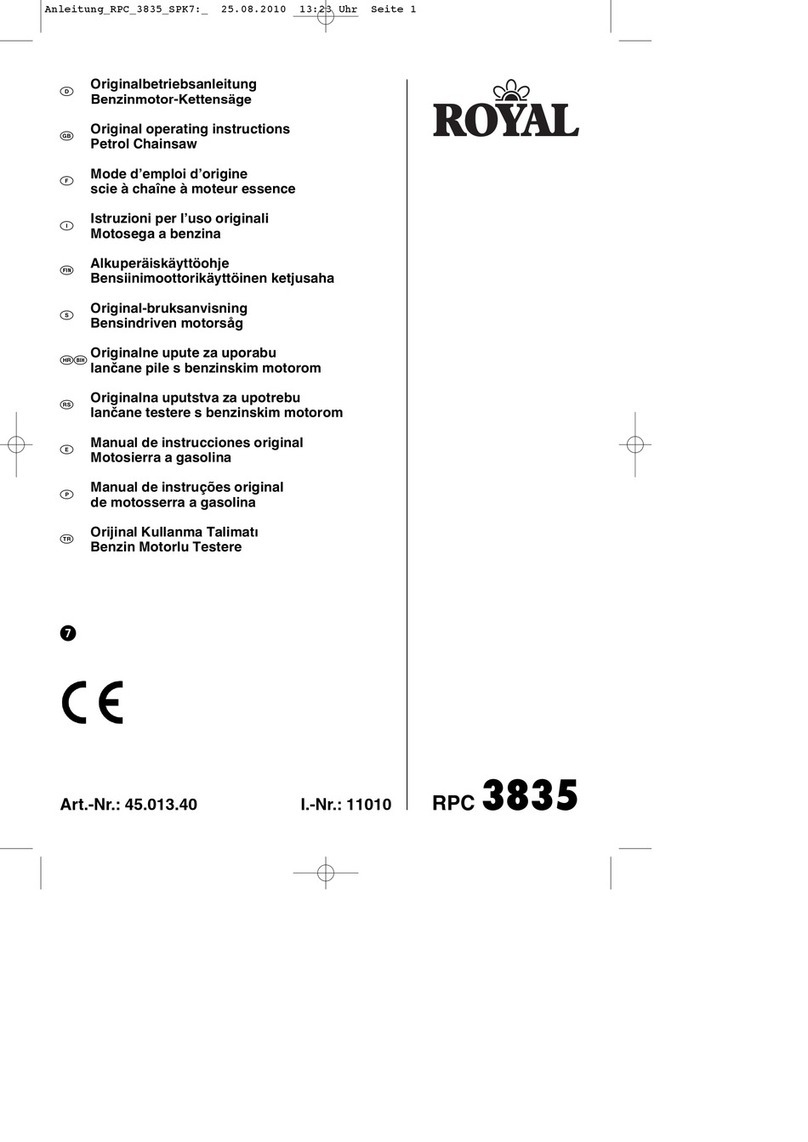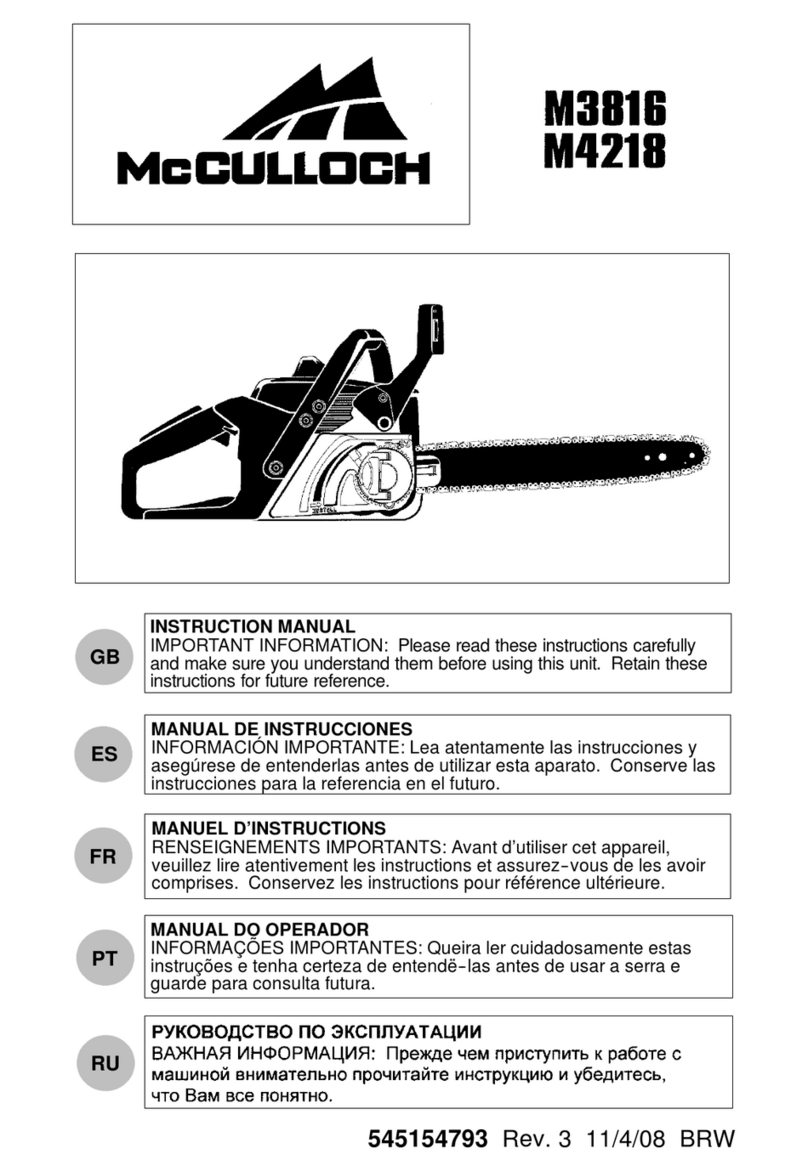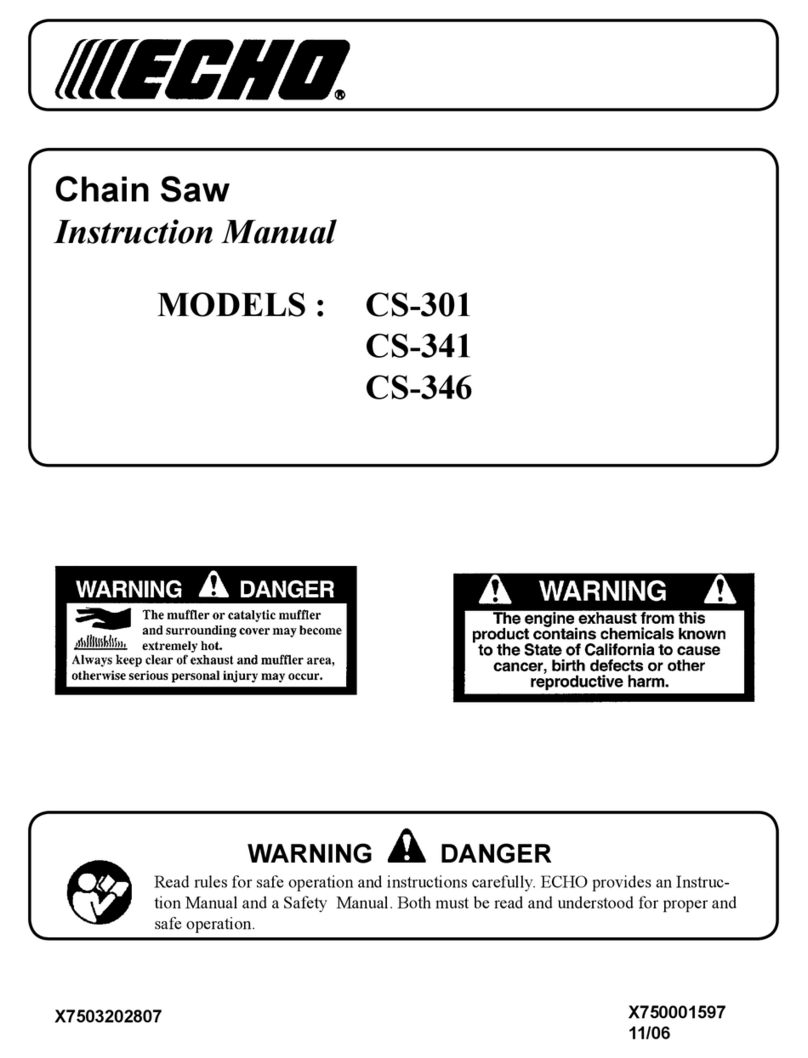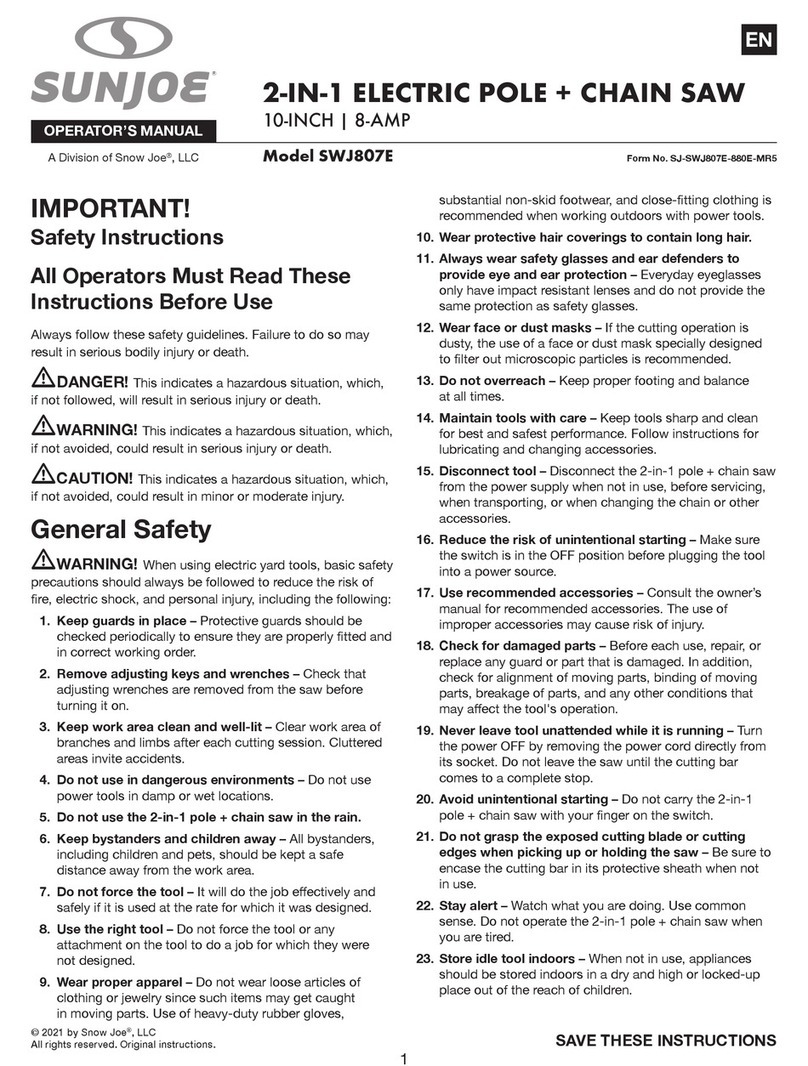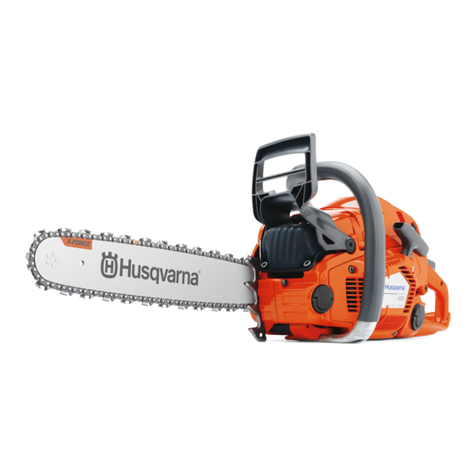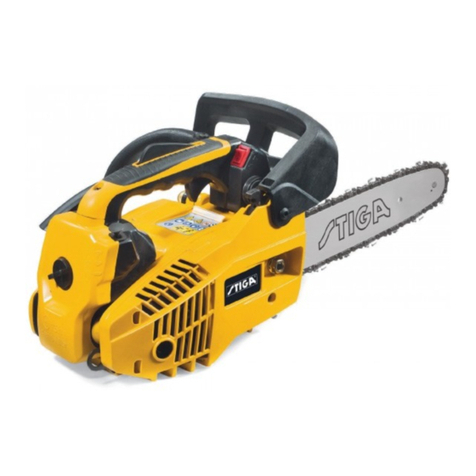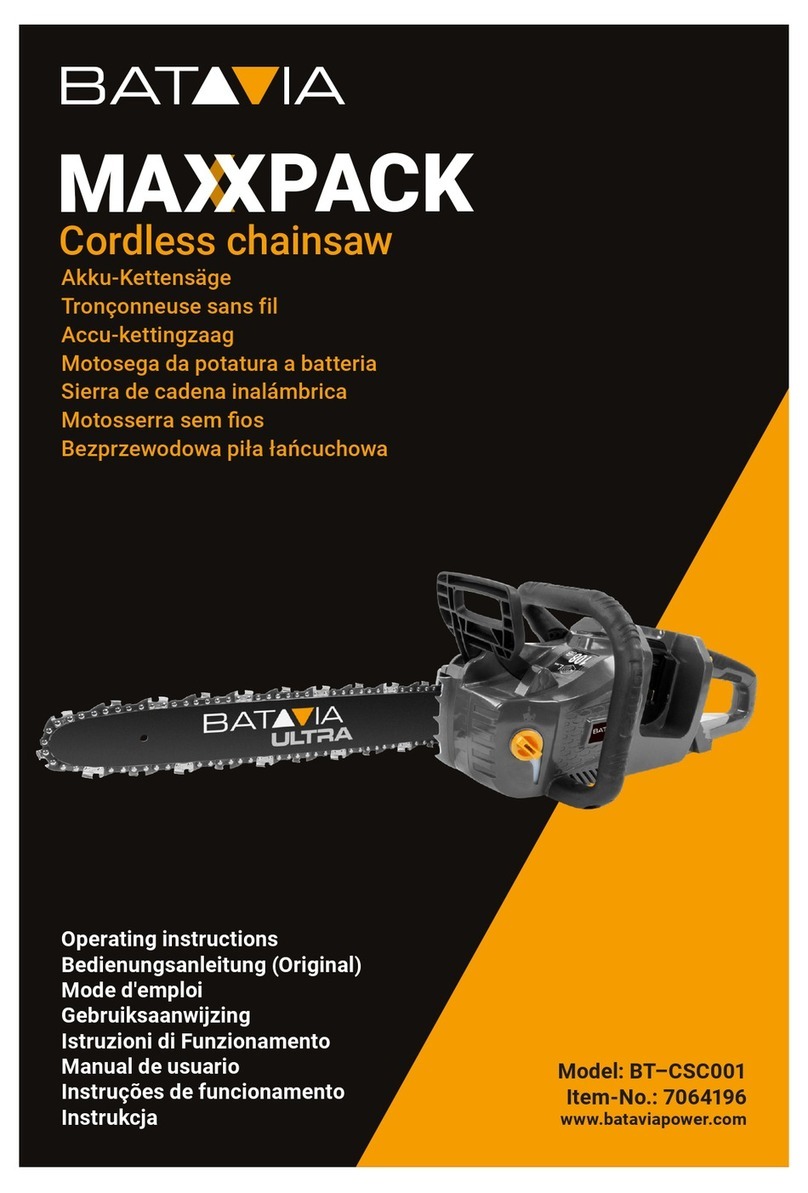
23
Checking the chain lubrication
N
Neverworkwiththechainsaw withoutesufficientchainlubrica-
tion.Otherwisetheservicelifeofthechainandguidebarwillbe
reduced.
Beforestartingworkchecktheoillevelinthetankandtheoilfeed.
Checkthe oilfeed rateas describedbelow:
- Startthe chainsaw.
- Holdtherunning chainsawapprox. 15cmabove a trunkor
theground(useanappropriatebase).
Ifthelubricationissufficient,youwillseealightoiltracebecause
oil will be flung off the sawing device.
M
Checking the safety chain brake
Do not work with the saw without first checking the chain
brake!
- Start the engine as described (make sure you have a good
footing,andplacethesawontheground in suchawaythat
the blade is free of contact).
- Grasp the tubular handle firmly with one hand and hold the
grip with the other.
- Withtheenginerunningatmoderatespeed,pressthehand
guard(C/1)inthedirectionofthearrowwiththebackofyour
handuntil the chain brake engages.The chain should stop
immediately.
- Immediately release the throttle and release the chain
brake.
IMPORTANT:If the chain does notstopimmediately when
youtestthechainbrake,doNOTusethesaw!Takethesaw
to a MAKITA service center.
CAUTION:
Optimumperfornancecanonlybeachievedifthecarbure-
tor is adjusted correctly. For this work, which should be
carriedoutbyanexpert,theenginemustbewarmedupfor
a period of 3-5 min. and the air filter must be clean.
The carburetor has been adjusted by MAKITA on the basis of
atmoshericpressureconditionsatsealevel.Otheratmospher-
ic pressure conditions or the running-in process of a new
engine may require readjustment of the carburetor.
It is urgently recommended to use a revolution indicator (O/1)
(order number 950 233 210) in order to achieve a correct
adjustment of the carburetor. Adjust the carburetor using a 4
mm screwdriver.
Thescrewdriver shown(O/2) (order number944 340001) has
a molded-on lug to assist in adjustment.
For adjusting the carburetor correctly the following steps
must be carried out:
1. Warm up engine
2. Switch off engine
3. Basic adjustment
4. Start engine
5. Set idle speed
6. Adjust speed
7. Check idling speed
8. Check acceleration
9. Check max. speed or output
10. Repeat adjustment procedure starting with step 5,until
idling speed, max. speed and acceleration are reached
with the adjustment made.
STOP
1
2
3
4
speed
O
1
2
6
Adjusting the carburetor
Basic adjustment (step 3)
- First, carefully turn the 2 adjusting screws for the main jet
(O/3) and the idle jet (O/4) to the right (clockwise) until you
feelthemstop.
- Nowturnbothscrews oneturntotheleft (counter-clockwise).
Set idle speed (step 5)
- If the chain turns when the engine is idling, unscrew the
throttle-valve stop screw (O/speed) until the chain stops. If
theenginerunsunevenly,screwthe screw (O/speed) back
in.
- Idling speed should be 2,600 rpm.
Adjust speed (output) (step 6)
- Adjust the speed by adjusting the main jet screw (O/3) to
11,500 rpm (DCS 340, 341), 12,000 rpm (DCS 400, 401).
Check idle speed (item 7)
- Afterhavingadjustedthemax.speedensuretheidlespeed
is set to 2,600 1rpm. (the chain must not turn). Use the idle
jetscrew(O/4)toregulateit.Turninthescrew(O/4)tospeed
up,and turnout thescrew (O/4) tospeed downthe engine.
Check acceleration (item 8)
- Now check the acceleration, i. e. the time necessary for
speeding up from idle speed to max. speed. To do this,
press the throttle lever hard.
- If the acceleration is too low, turn out the idle jet screw
(O/4) approx. 1/8 rotation.
Do not run the engine without load a high speed, open
throttle fully only, if you are sawing!
STOP
1
2
